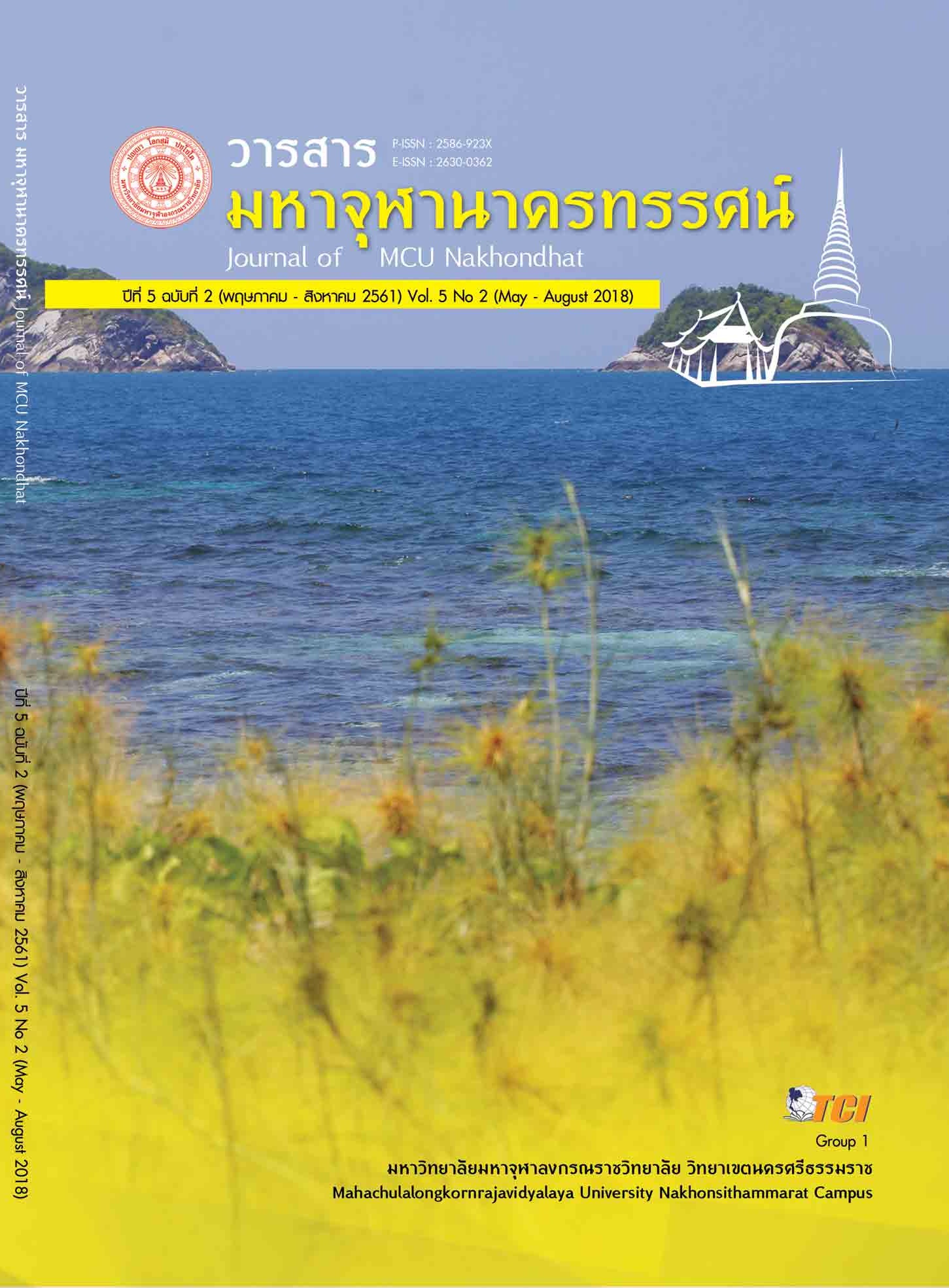The Cohabitation of Musalim and Buddhist Communities, in the Area of Tepa District, Sabayoi District, Natawe District, and Chana District, Songkhla Province.
Main Article Content
Abstract
The Objectives of this research is; 1) to study background, lifestyle and identity of the Buddhist and Muslim communities. 2) to study the interactions between people on the differences between the Buddhist and Muslim communities; 3) to propose the ways of cohabitation of the Buddhist and Muslim communities in Tepa District, Sabayoi District, Natawe District, and Chana District, Songkhla Province. Mixed Methods Research is the research that uses qualitative research and quantitative research techniques.
The results of research were found as follows:
1.Background, lifestyle and identity of the Buddhist and Muslim communities in Tepa District, Sabayoi District, Natawe District, and Chana District, Songkhla Province. There are different ways of life, identity and belief. But do not lead to disorganized. In the past, the lifestyle, the identity on the cultural differences are smooth and brotherly. Nowadays, after the government has shown the intention, to make everyone to be reconciled. Both Buddhist and Muslim communities, start changing, and make a mutual understanding.
2. The interaction between people on religious differences in the Buddhist and Muslim communities found that the variables in the relationship between Buddhists and Muslims, There is a consensus on how to live together in a group that has a different stance on tradition and culture. There are also different beliefs, but not divisibility, can live together. By living, talking, being friendly, being friends and do not bring faith to be concerned in daily life.
3.The proposed method of cohabitation of the Buddhist and Muslim communities was found to be a variable group when comparing opinions about the general condition. Cohabitation, the interaction of Buddhists and Muslims, and the way of life, traditions and cultures of the four aspects are brotherly, meeting, talking, learning, and developing together. By focusing on the value of planning everyone is involved. The use of technology and resources to train people can perform self-development. Solving the basic needs based on two groups of people, helping each other in the traditional way. The use of traditions, cultures and communication in accordance with the development to be continue.
Article Details
References
ประเวศ อินทองปาน,พระครูประสุต โพธิคุณ,พีระศิลป์ บุญทอง. (2 กรกฎาคม 2559). การนำหลักสังคหวัตถุ 4 ไปใช้ในชีวิตประจำวันของประชาชนในเขต ตำบลคลองหอยโข่ง อำเภอคลองหอยโข่ง จังหวัดสงขลา. มหาจุฬานาครทรรศน์.
พระครูพิทักษ์นิมพเขต. (15 มกราคม 2558). วิถีชีวิตความเป็นอยู่ของชาวไทยพุทธและมุสลิม. สงขลา.
สืบพงษ์ ธรรมชาติ, พระครู อรุณสิงหธรรม. (กรกฎาคม - ธันวาคม 2558). ศึกษาบทบาทพระสงฆ์ในการพัฒนาสังคมตามแนวพุทธศาสนา : กรณีศึกษาพระครูประภัศรธรรมวิธาน (มิ่ง ปภสฺสโร). มหาจุฬานาครทรรศน์(2).


